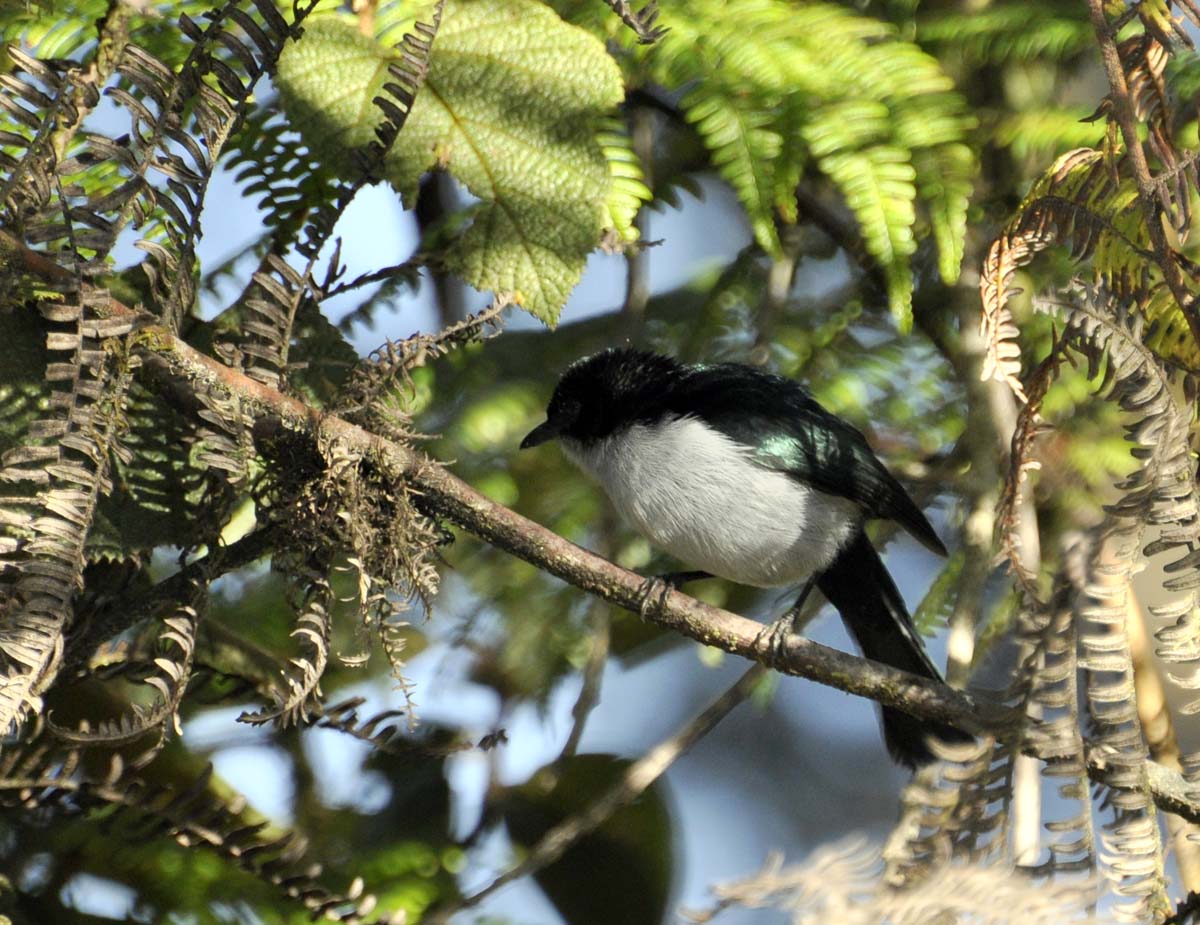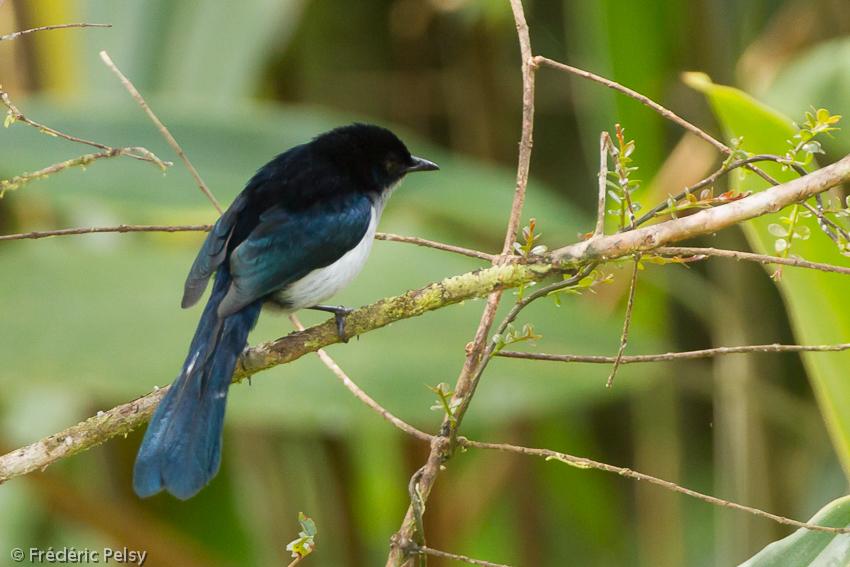
Melanocharis versteri
TAXONOMY
Pristorhamphus versteri Finsch, 1876, New Guinea. Four subspecies.
OTHER COMMON NAMES
French: Piquebaie йventail; German: Fдcherschwanz-
Beerenpicker; Spanish: Cerezero Cola de Abanico.
PHYSICAL CHARACTERISTICS
5.5–6 in (14–19 cm). Female larger (wing length (2.6–2.8 in
[6.6–7.1 cm]) and heavier (0.56–0.7 oz [16–20 g]) than male
(2.32–2.52 in [5.9–6.4 cm]; 0.44–0.53 oz [12.5–15 g]). Whitish
underparts and lateral feathers on distinctively long tail.
Brownish black upperparts.
DISTRIBUTION
From 4,500 to 10,800 ft (1,400–3,300 m) up in mountains in
New Guinea in both Indonesia (Irian Jaya) and Papua New
Guinea. M. v. maculiceps: southeast New Guinea; M. v. meeki:
northwest New Guinea, Weyland, and Snow Mountains; M. v.
versteri: northwest New Guinea, Vogelkop; M. v. virago: northern
and northeast New Guinea.
HABITAT
Montane forest, tree-fern heaths, and alpine thickets. Sometimes
occurs in middle strata of forest but usually keeps to
undergrowth.
BEHAVIOR
Shy, usually solitary or in pairs, and an active feeder. Shows
white in tail when flying. Acrobatic. Harsh song; it also utters
squeaks and nasal scolding calls.
FEEDING ECOLOGY AND DIET
Small berries, eaten whole, and insects. Sometimes hover-gleans
to feed.
REPRODUCTIVE BIOLOGY
Nest large in relation to the bird’s size. A solid deep cup, 3 in
(8 cm) across and 4 in (10 cm) high, placed in the fork of a
branch, and well-camouflaged.
CONSERVATION STATUS
Not threatened.
SIGNIFICANCE TO HUMANS
None known.
Photo Gallery of - Fan-tailed berrypecker




 Animalia Life
Animalia Life